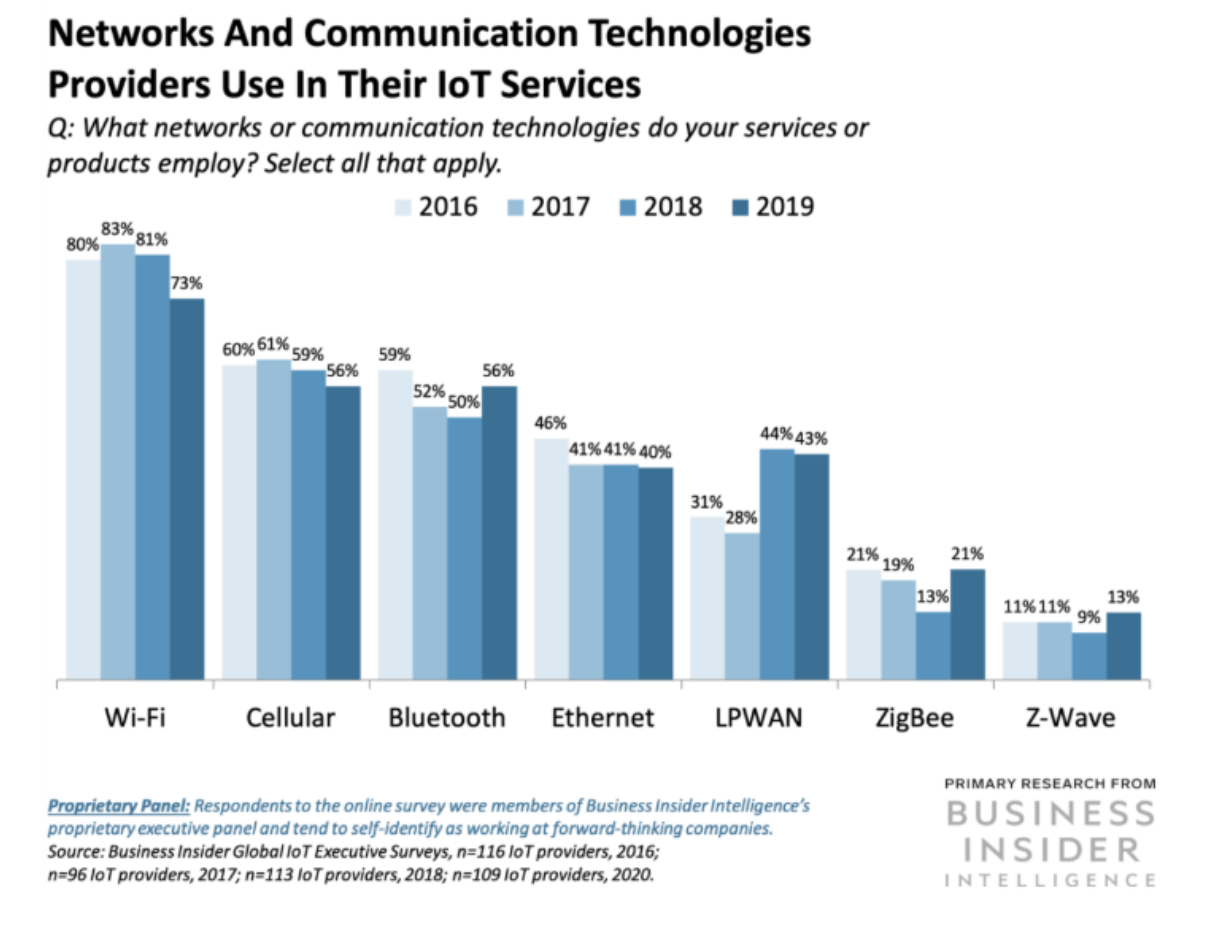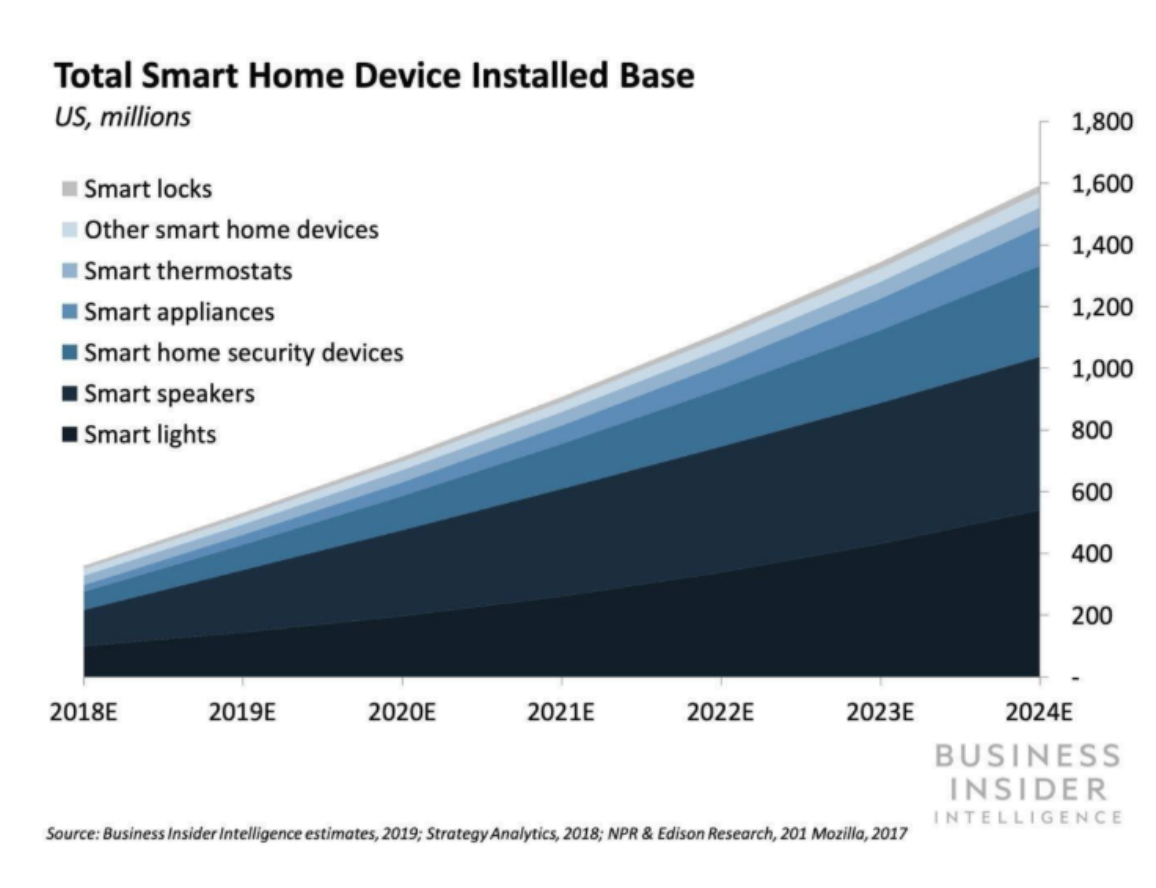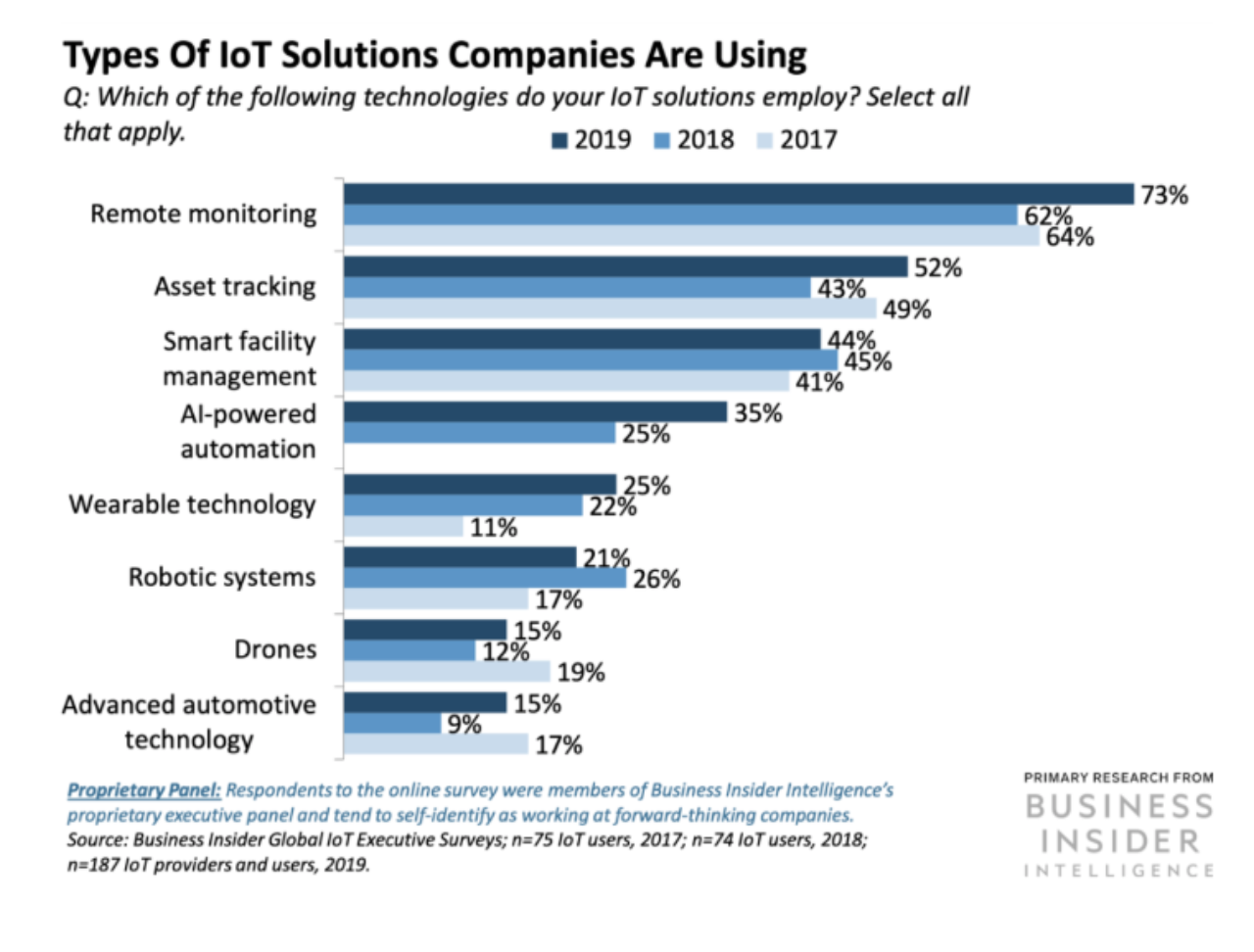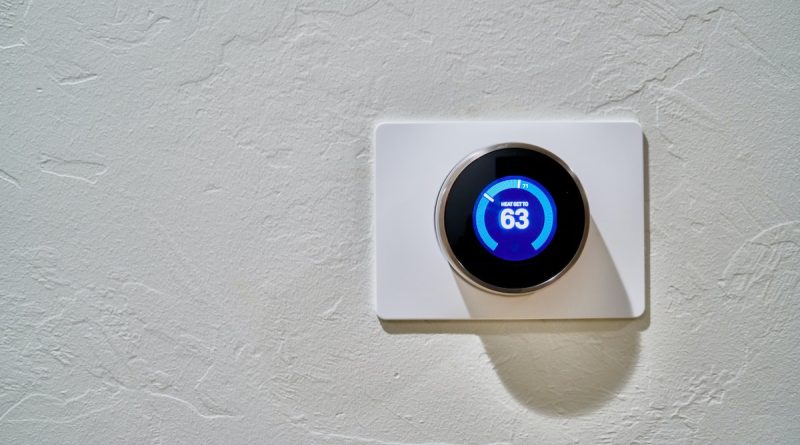What the Future Holds for IoT
Business Insider Intelligence has presented The Internet of Things 2020 report highlighting the current state and future of the IoT industry. The researchers used their own sample, as well as the opinions of 400 experts in the field.
IoT Ecosystem
The production of IoT devices is becoming more affordable every year. All thanks to the scaling and formation of the Internet of Things as a mature industry.
Business Insider Intelligence (BII) and Goldman Sachs estimate that the average price of a single sensor will almost double by 2025 to $0.25. Companies that make IoT devices will work more closely with technology giants; many startups will create products specifically for Cloud solutions, such as AWS or Google Cloud.
Wi-Fi remains the main type of communication in the industry. It is used by three of the four companies surveyed by BII.
At the same time, high-speed cellular communications will become more widespread, thanks in part to the advent of 5G. As an example, the French company Sigfox is using cellular communication in IoT. It has helped tire maker Michelin monitor logistics, and now saves up to €10 million a year in costs.
A smartphone is still the main device to manage IoT devices. It will remain a leader for at least another five years. Ericson estimates that by 2025, there will be 7.4 billion smartphones in use worldwide. At the same time, voice assistants are gaining popularity. According to the same survey, 9% of respondents already use them with their products, and almost half are open to innovation.
The main challenge in the field remains security. Some companies solve the problem by buying specialized firms. At the same time, consumer IoT devices are still more vulnerable to cyberattacks than enterprise products. BII believes that companies need to invest in security tools and protocols – with artificial intelligence (AI) leading the way and enabling automatic detection of the threat.

IoT Market
According to BII, there will be more than 41 billion installed IoT devices in the world by 2027. However, the next few years will see the main growth. Over time, the number of new solutions in the IoT space will decrease due to the improvement of AI tools and optimization. It is estimated that in 2027 $2.4 trillion will be invested in IoT. In total, from 2019 to 2027, the amount of investment will be $11.6 trillion.

Among the most promising technologies are cloud computing, 5G, and artificial intelligence. The introduction of 5G, in particular, will have a major impact on the Internet of Things. Experts interviewed by BII say that currently only 10% of IoT solutions use cellular communication, and this is a great opportunity for others.
About 40% of BII respondents say their products already support or will support fifth-generation communications by the end of the year. Artificial intelligence and machine learning are already quite common: more than half of providers use them in their products, and a third is considering options for their implementation.
IoT for consumers
By 2024, the number of IoT devices in American homes will surpass 1.6 billion units. Among them – 500 million smart lamps and voice assistants, as well as 300 million devices for security.
Smart speakers will become even more commonplace. The availability of such devices changes the way companies interact with customers – in the fields of media, e-commerce, finance. Most respondents who have at least one smart speaker said that they have two or more such devices. The main audience is millennials and Generation X.
People use smart speakers mainly to listen to music. Other scenarios: use standard features such as alarm clock and weather, control TV and other multimedia, calls and messages, and control IoT devices. BII notes that if a company’s service cannot be reproduced on a column, it loses a large share of the market.
Enterprise IoT
Companies use IoT solutions mainly to optimize and automate processes. These items were chosen by 62% and 47% of respondents, respectively. Other goals are to improve customer experience and increase production. The main challenges of the company are security and immaturity of the technology itself.

Among the types of IoT solutions, remote monitoring prevails. It is used by three of the four companies. Other use cases are asset tracking, smart equipment management, and AI automation.
At this stage, companies are reluctant to invest in IoT solutions. A quarter of respondents invested up to $25,000 in 2019, 20% – from $100,000 to $1 million. And just over 10% invested more than $1 million. Spending on smart cities will continue to rise, reaching $295 billion in 2025. Most of the spending will fall on fast-growing cities in the Asia-Pacific region, where people are actively migrating to urban areas.
Stay tuned with Software Focus!

